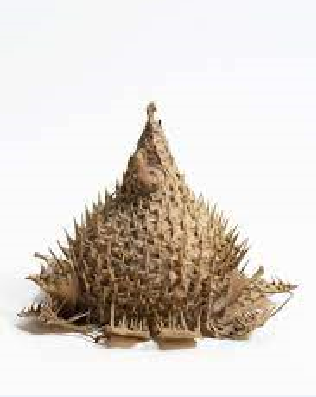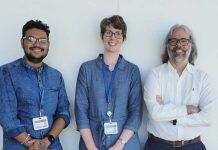Objects from the Chau Chak Wing Museum are incorporated into a core Master of Commerce Unit at the University’s Business School.


Few would imagine a helmet made from dried pufferfish skin has much to offer a postgraduate business student.
But the University of Sydney’s Chau Chak Wing Museum has incorporated this 19th century artefact into a core Master of Commerce unit. The fish helmet from Kiribati is one of a multitude of objects from the museum used to teach the Analytic and Creative Mindsets unit. During the course, students spend a session—either virtually or in-person—working with museum objects to spur their creative thinking.
A report on the collaboration between the University of Sydney Business School and the museum has been published in the Journal of Learning Development in Higher Education, citing the benefits of Object Based Learning (OBL).
According to the authors, “incorporating a museum OBL experience acted as a disruptor for students, initially placing them in unfamiliar territory and removing the standard support structures that they find in a traditional accounting classroom.”
OBL as a teaching method, the article explains, “is particularly effective for group work and skill development around empathy, communication, observation, analysis, deductive reasoning, problem solving and creative and critical thinking, all wonderfully transferable skills for future employment.”
The main activity involves students working in groups to weave a creative narrative that connects four unfamiliar and seemingly disconnected artefacts, specimens and artworks. This lays the groundwork for a formal assessment requiring students to devise a business problem and then find a creative solution for it.
“Creativity is increasingly recognised as an important aspect of business education,” said Dr Dewa Wardak from the Business School’s Co-Design team, which worked with unit coordinators to develop Analytic and Creative Mindsets. “More and more companies require staff to look at existing problems in different ways, to find novel alternatives. As a hands-on component, this exercise enhanced students’ knowledge retention and was fun to boot.”
Other objects incorporated into the Business School’s classes include a 1940s anti-gravity suit, a giant beetle specimen, a bronze thumb from an ancient Greek statue and a 1980s poster promoting anti-nuclear policies.
The Chau Chak Wing Museum opened at the University last year and, when COVID-19 restrictions allow, is open free of charge to the public. The museum brings the University’s collections of antiquities, natural history, historic photographs, cultural artefacts and art under one roof.
“Aside from being an important cultural asset in Sydney, our museum stands out from others by offering our students and staff unique opportunities to incorporate objects and artefacts spanning millennia into their learning experience,” said museum director David Ellis.
The paper Collaborating on a Creative Solution was authored by Dr Wardak and Dr Abdul Razeed, from the Business School and Chau Chak Wing Museum Academic Engagement Curators Jane Thogersen and Dr Eve Guerry.






































